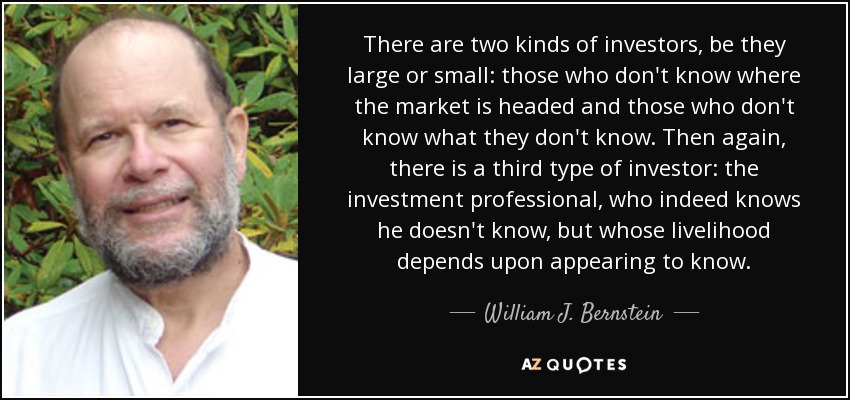audreyh1
Give me a museum and I'll fill it. (Picasso) Give me a forum ...
Yes, Bernstein was obviously blindsided by his clients bailing at the bottom. But that wasn't the worst part. The worst part was that once they bailed, they couldn't bring themselves to get back in. So they ended up locking in their loses permanently.
I feel for him. That was obviously some kind of "come to Jesus" moment for him when he realized that his clients, not being particularly sophisticated investors, no matter how hard he worked to educate then, would fall prey to panic and make really bad decisions. Well - with hindsight they looked really bad. What if things had worked out differently?
Many of us here who stayed invested, even rebalancing when things looked so dire (although I think quite a few folks couldn't bring themselves to rebalance, but at least they stayed invested), we were lucky. It could have been much worse. It could have been much, much longer recovery.
I don't think we should be so sanguine about the next nasty bear and expect a quick recovery like in 2009 and 2010. It won't necessarily bounce right back.
I feel for him. That was obviously some kind of "come to Jesus" moment for him when he realized that his clients, not being particularly sophisticated investors, no matter how hard he worked to educate then, would fall prey to panic and make really bad decisions. Well - with hindsight they looked really bad. What if things had worked out differently?
Many of us here who stayed invested, even rebalancing when things looked so dire (although I think quite a few folks couldn't bring themselves to rebalance, but at least they stayed invested), we were lucky. It could have been much worse. It could have been much, much longer recovery.
I don't think we should be so sanguine about the next nasty bear and expect a quick recovery like in 2009 and 2010. It won't necessarily bounce right back.


